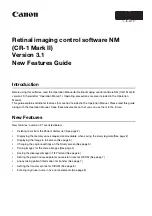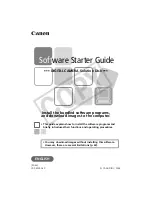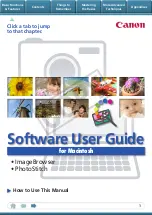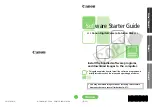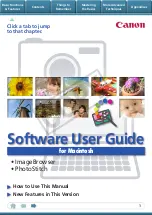
EXPANDING SOLARIS WITH RD MODULES |
43
Expanding Solaris with RD Modules
Overview
The RD concept provides a basic ‘synthesizer shell’,
into which the same variety of oscillators,
fi
lters, and ef-
fects modules as mentioned above can be put together
by the user, within certain structural limitations. The
fi
rst
device in the series (called Red Dwarf EX), is basically
taken from the successful CombPlus Pro design. Us-
ing the modulation and signal routing from that device
as the basic ‘shell’, the user can insert any two sound
sources and any two
fi
lters in the SLOTS provided to
create a ‘custom’ design. Even more important, EACH
preset can be contain different modules for these
slots, as well as for the effects, providing for a much
more
fl
exible device. It’s even possible to obtain some
unusual routings, such as placing an oscillator block
into a
fi
lter slot, using the oscillator slots as sources of
modulation, etc., or for the ultimate in
fl
exibility, use a
Modular insert to ‘drop in’ your own custom con
fi
gura-
tion of oscillators or
fi
lters, using the Modular 1 or 2
modules.
Instructions
For editing, you will want to double-click on the name
of the module once you’ve loaded it in a slot. This
brings up a ‘mini’ control panel, which contains all
parameters that could not be accounted for on the main
synthesizer front panel. (The ‘mini’ control panel should
appear when the module is
fi
rst loaded in the RD Slot.
Double-clicking on the Insert Slot should put away the
panel; repeated clicking should toggle the display of
the panel.) A few modules do not have a control panel.
For these, there is a special “Offset Module”, which you
can then use to change the frequency of an oscillator
or
fi
lter. You
fi
rst load the Offset Module, then load the
desired module into the Offset’s insert slot.
Each module will have different parameters, although
there are similarities in the dual osc pairs, etc. Since
all oscillators need an initial frequency, and most all
of them need some waveshape control (except the
dedicated sine or saws), these parameters have been
located on the main synth surface. Special ‘oscillator
pairs’ have provisions for offsetting the initial pitch or
shape settings, and also, one of the two oscs usually
have a switch that shuts off waveshape modulation
completely.
Likewise for the
fi
lter slots, all
fi
lters have a cutoff
(frequency) parameter, so you adjust this via the main
synth surface. Most
fi
lters also have a resonance con-
trol, but this parameter has been put on the individual
‘mini’ control panels for each
fi
lter. If you double-click
on the inserted
fi
lter module and get nothing, then
there is no control surface needed for that module (for
example, the 18 dB Lowpass has no resonance, so no
control panel).
You will need to adjust the main synth’s controls and
the ‘mini’ control panel settings together to get the
most out of the oscillator pairs. Just be aware that the
main coarse and
fi
ne tuning controls interact with the
mini control panel settings, as do the Initial Shape and
Shape Mod controls on the synth’s main panel.
Special note to RD II users:
Unfortunately, there is a permanent bug in the graphic object
that displays the number of points and values for the Key
Level with the new preset list. This means that sometimes the
graphic will correctly represent that which was programmed
for the preset, but other times the display will not be correct,
even though the Key Level output is correct. And then there
is the chance that the fi rst time you select the preset, you will
not get what was stored, and only upon selecting the preset
again, or going to a completely diff erent preset and back
again, will you get the desired result. What this means is that
it is practically impossible to make dependable preset settings
with the new style preset list and the Key Level object, how-
ever the old style list (available from the Modular Oscs section)
will store them correctly.
The Rotor II, Rotor with Mixers, Y connector II, and Se-
ries-Parallel II no longer need to be saved as templates
(see below), unless you are doing something like
fi
lling
the Y connector with other Y connector modules. In this
case, you should make speci
fi
cally named copies of the
Y connector modules for this kind of ‘stacking’. (Please
follow the instructions to make copies of the modules in
the Templates section below.)
The two special case modules - the Y Connector, and
the Series/Parallel - allow you to greatly expand the ca-
pabilities of the different slots. These can be placed in
slots to expand the number of objects available within
a slot. For example, you may want to have four oscilla-
tors in a single slot. By using the Y Connector, you can
drop in two ‘oscillator pair’ modules, one for each insert
slot in the Y Connector. The only thing you should be
aware of is the level; it’s easy to clip audio levels when
using this approach.
And, as already mentioned, you can also use these
special modules within themselves, i.e., you can insert
a second and third Y Connector into both Y Connector
slots, etc., which I have called ‘stacking’.
Saving Modular Patches
Using the Modular Windows - when trying to make
presets using modules from any of the Modular series,
I found that there was no way to store the ‘patch’ in
the new preset list, so, I had to insert one of the older
Содержание Solaris V5
Страница 1: ...User Guide V5 By John Bowen and Brent Garlow ...
Страница 30: ...30 SOUND MODIFIERS Figure 35 Looping Envelope Diagram ...
Страница 47: ...John Bowen Synth Design www johnbowen com ...




















